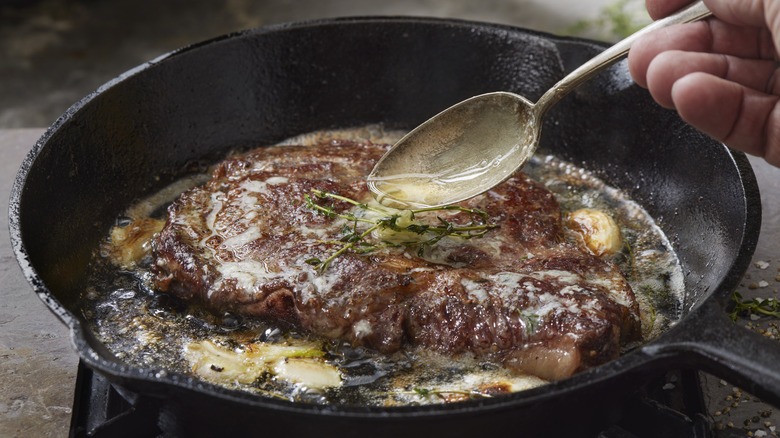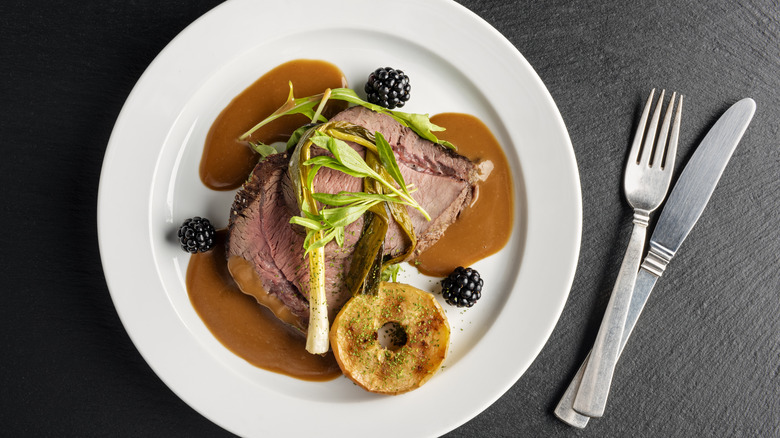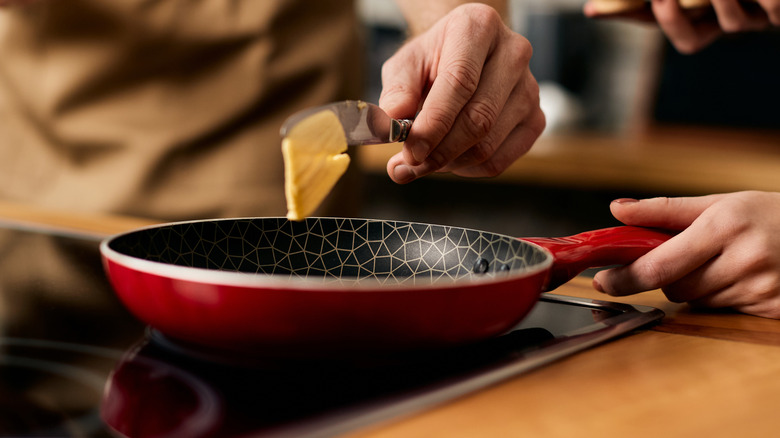Avoid A Broken Pan Sauce With An Easy Butter Temperature Fix
Pan sauces seem like an easy win. After you finish browning and searing a protein, you can add aromatics, spices, and then a liquid of your choice to the pan to scrape up all the flavors left behind. The result is an umami-rich mixture that elevates even the simplest meals into a gourmet feast. And if, out of an abundance of caution, you overcooked your chicken, you use the added moisture to cover up all manner of well-intentioned mistakes.
The pitfall, however, is that a sauce can break before you make it to the finish line. A broken sauce is when the different components of the liquid separate, and you can see droplets or a thick sheen of fat floating around your mixture. Not only does this look unappealing, but it tastes off, too.
To avoid a greasy mess, reduce the heat and make sure to add cold butter straight from the fridge after your stock and alcohol have otherwise finished cooking. This allows the fat to combine slowly and blend seamlessly into your sauce, rather than shock the liquid and cause it to split. The result should be a five-star, velvety texture that's on par with your favorite restaurant.
Why butter improves pan sauces
Pan sauces finished with butter are a great example of an emulsion — a term we often throw around when it comes to vinaigrettes. Oil and water, which normally aren't fond of combining, call a brief truce and form a creamy solution that's more than the sum of its parts. Here, a thin liquid becomes something silky, hefty, and luxurious thanks to the addition of butterfat.
Adding cold butter at the end of a cook is actually a technique the French call "monter au beurre." The key is a slow and steady process, rather than a rush job. Whisk in small pats over low heat or even off the stove to ensure a gentle blending. This encourages the solution to actually suspend the fat, rather than form an unwanted oil slick.
Pay attention not only to the temperature of your butter but to the mixture in the pan. Just as chefs bank on the cold butter melting slower, they also allow the liquid base to cool from hot to warm. Again, this helps combat separation. And take a hint from vinaigrettes — whisk with enthusiasm to combine.
Saving a broken mixture
Knowing the basics of a pan sauce can open up a world of culinary opportunities. Suddenly, you can incorporate everything from the leftover beer you saved to Giada De Laurentiis's favorite anchovy paste into your food, even if you didn't have time for an ambitious marinade. However, in reducing a heavy pour of stock or alcohol, you may go a little overboard and lose too much liquid.
If that's the case, when it comes time to add your chilled butter, the sauce might protest. Even if you've done everything right, an overly reduced mixture could split because you don't have a high enough water content. Don't panic! Simply add water to the pan (try roughly ¼ cup to start), and mix vigorously over heat to get back on track. Provided nothing's burnt, the reconstituted solution will eventually emulsify and result in a tasty, smooth finished product.
Or, cover all your bases, and take a gravy-inspired approach. Add a small spoonful of cornstarch to thicken up with the butter. The mixture will be slightly heavier, but still rich and tasty. And make sure those added pats are your last step before plating. Continuing to cook your sauce invites it to break yet again.



